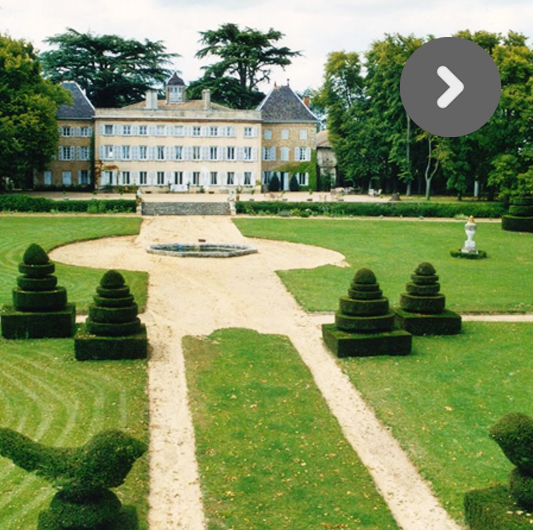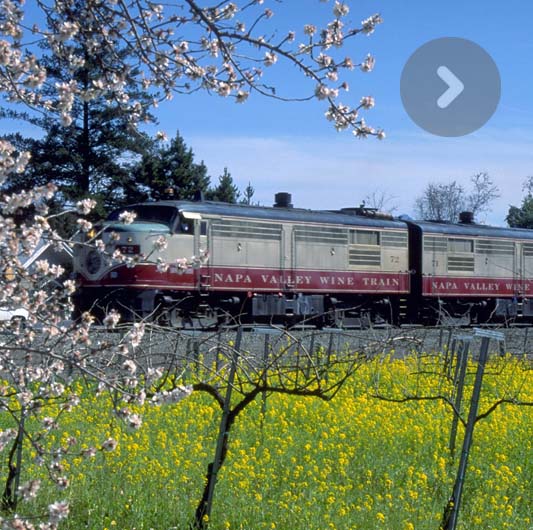Caissargues
Château des Nages. Michel Gassier, a convert to organic agriculture, is convinced that “ the less man intervenes, the more the soil expresses itself”. He is not the only one! On his soil mostly planted in rhodanian varieties, round stones caressed by the Mediterranean give freshness and purity to the wines. The JT cuvée, (Joseph Torres, founder of the domain )is a harsh wine with 95% of roussane, and the remainder in grenache. It’s a wine of a brilliant greenish yellow color offers aromas of lime tree and grilled almonds. www.michelgassier.com
Générac
Château de Valcombe. Look up: 1784, the year engraved in stone at the entrance of the wine cellar dates from the first vines planted by Surville. In the 18th century, the provençal farmhouse was used as a hunting lodge. The buildings – farmhouse, stables and castle, were added later as funds became available. After World War II, Charles Ricome, the nephew, was the first one in the area to plant syrah. A block of 73 hectares of vines surrounds the domain, 70% of which are planted in syrah for AOC Costières de Nîmes. Tasting cellar in the old 18th centjury stables.www.chateaudevalcombe.com
Vauvert

They practically abandoned their profession of dental surgeon in to take root in Vauvert, in Petite Camargue. Nadine and Fernand Renouard are “new generation” wine growers. With a new vision, they launch an agro-forestry project in this viticultural domain of their own creation. A novelty? No, rather a return to a tradition that goes back to antiquity, when vines share space with olive tree, truffle oaks and fruit-bearing trees. Edouard Sentex, master winemaker, confirms that tree and vine in osmosis rebalance the ecological system to finally create a good, a very good wine. Hedges are replanted, areas are fallowed or planted with fodder crops . The contemporary winemaking plant, and spacious tasting room, is teamed on the surface with a water pond that acts as thermal pad with the cellar. Giono would not have disowned this domain. Visit and tasting upon reservation.
www.scamandre.com
Franquevaux
Domaine Beaubois. This domain dating from the 13th century was connected to the Cistercian abbey of Franquevaux. Beaubois has been in the Boyer family since 1922. Brother and sister, François and Fanny, look after 60 hectares of vines and one hectare of olive trees. In production: IGP Aude and AOP Costières de Nîmes whose Confidence 2008 created with 95% white grenache offers a surprising cuvée perfumed with mango, pear and cardamom revolving into white chocolate. Confidence 2010 dressed in a light red hue ends up in the mouth on a spicy note. Good news: their rosé wine for the next cuvée will be organic.www.chateau-beaubois.com
Vérargues
Château de la Devèze. Charles Rochemore, governor of the city of Lunel and Henri, lieutenant in the royal navy, used to own this 17th century castle, a historical domain. With about 100 hectares of vines, the Navarro family produces Muscat de Lunel Château de la Devèze and AOP Coteaux du Languedoc. Tastings in a cellar dating from the 17th and 18th centuries. www.chateaudeladeveze.fr
Sommières
The river Vidourie runs along Sommières, a beautiful medieval city still to be discovered. It is also the village of the Sommières clay, a very absorbent clay that used to be and remains an excellent ecologic spot remover.
Domaine de Massereau. From Louis Causse to Arnaud Freichet, the Massereau domain perpetuates since 1804 a tradition of “Independent wine growers”. A fidelity that has allowed each generation to participate in the spirit of their wine. An innovating and surprising spirit, since Arnaud and his brother have created a resort temple at the entrance to Sommières. An open air hotel, truly a camping site where five-star care is provided, with bungalows, cottages and service “à la carte” in a wooded and protected area. A “très chic” camping site. www.massereau.com
![]()
Le Nulle Part Ailleurs. There are, of course a number of restaurants open during the summer months in this very touristic city. However, this establishment is open all year long and offers glasses of wine and tapas that do not show up on the menu. 11 rue Paulin Capmal, Place Jean. Tel.: 04 66 80 00 34
Domaine de Massereau. From Louis Causse to Arnaud Freychet, the domaine Massereau perpetuates a tradition, that of being “Vignerons indépendants” since 1804. Fidelity allowed each generation to participate in the spirit of their wine. This innovative and surprising spirit since Arnaud and his brother have created a resort temple at the gates of Sommières. An open air hotel, a camping site really, but watch out! This is a 5 star: bungalows, cottages and service “à la carte” in a landscaped, wooded and protected area. A camping très chic! www.massereau.com
Saint-Drezéry
![]()
Bar du Foot. If you cross the village of Saint-Drezéry at lunch time, do not hesitate; stop at the Bar du Foot. An authentic village café canteen, the only one, moreover, the only one open all year long! The mistress of the house is at the stove, the plat du jour is generous, the bill is light and the welcome “sweet”. No phone. All you have to do is go between noon and 2PM, that’s all.

How does the spirit of wine comes to an industrialist? It happened to Gérard Bru. Gérard, a witty man, entrusted his roots and his destiny to Saint-Drezéry with the faith of a “new generation” wine grower. Stone upon stone, creating from nothingness, he built and signed the history of his vineyard and his domain. A domain where the art of winemaking and Art go hand in hand. Recuperation of historic stones for his house, venerable vine stalks for his vineyard – Gérard has become the ancestor of modernity. Nothing stops him, everything stimulates him. His crest, a ram’s head in stone, is reproduced ad infinitum in the winemaking plant and engraved on bottles and labels. The casks support creativity. Di Rosa, Jean-Paul Bocaj or Chantal Thomas sign their work on the wood. And what about the wine? Well, I swear, the elegance of the bottle of rosée cuvée Prestige 2012 is in perfect equation with the house.
www.puech-haut.com
Lauret
Mas Thélème. When she left her native Belgium and married Alain, Fabienne married the vine. An epicurian female winemaker enamored of Rabelais, who cites the Mireval muscat in Pantagruel. Thus, it is not surprising that the domaine was named Thélème and that the divine bottle has pride of place. After Carpe Diem, the first cuvée, followed Exultet and Grandgousier, a cuvée in Pic saint loup Coteaux du Languedoc, an opulent blend of syrah and grenache to keep. and also a cuvée in Pays d’Oc Nomen Omen wine. Some program! www.mas-theleme.com
Aigues-Mortes
Saint-Louis’ city
Classified as Historical Monument, the fortifications of medieval architecture still dominate the Camargue. Aigues-Mortes was built by Saint Louis at the entrance of the kingdom around 1240 as access to the Mediterranean for the Crusades and the commerce of salt and spices. It has been surnamed the Saint-Louis’ city. In fact, Jacques Coeur established in Languedoc a departure point for his royal navy. It is said that Rabelais witnessed the meeting between François 1st and Charles-Quint in 1538. The prince of Navarre, future Henri 4th, visited the city with Charles 9th and Catherine de Medicis. Lawrence of Arabia discovered it with delight in 1908, and so do we. Towers, fort, port, convents, penitent chapels, from Louis 9th to the Revolution, through the Crusades, the Knights Templar and the religious wars, the city is an open page of history.
![]()
L’Atelier de Nicolas. Nicolas, militant of taste, offers a beautiful menu executed exclusively with produce from the Gard. A guarantee for “locavores.” The restaurant is open all year. 28 avenue rue A de Lorraine. Tel.: 04 34 28 04 84
Le Millésime. In his wine bar, Frédéric, a professional sommelier, helps you to discover with passion some AOPs and wines of the surrounding countryside to accompany tapas. 38 rue de la République. Tel.: 04 66 53 74 60
Castelnau-le-Lez
![]()
Le Domaine de Verchant. An hôtel, a restaurant, a spa, vines … a 5-star site at the doors of Montpellier. Enough to please the chic-est of our wine travellers during their stop in Montpellier. The hôtel has been conceived in the refined, very high tech style of Raymond Morel, creator of the Murano and the Kube in Paris. The Pourcel brothers have been entrusted with the restaurant. At the spa, the protocol of care is signed by Anne Semonin and Valmont. Enough said! We’ll meet at the cellar for discovery and tasting of the wines of the domain. Member of Relais&Châteaux. 1 bd Philippe Lamour. Tel.: 04 67 07 26 00. www.domaine de verchant.com








